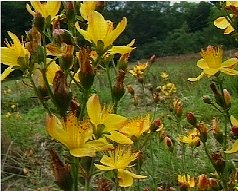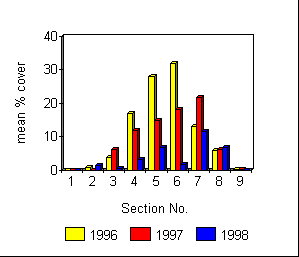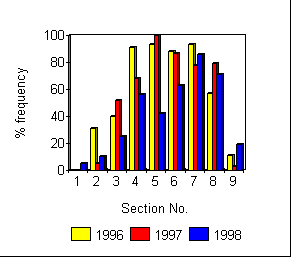The Woodland Education Centre
Heathland Project Report Report Introduction Contents Summary
The Effects of Brushcutting
a) General
iii) Indirect - Distribution of St. John’s Wort

Slender St. John’s Wort (Hypericum pulchrum) - (picture above) was widely distributed over the site initially. It was the fourth most dominant species in 1996 (Table). Its distribution on the site was very central in 1996, being concentrated in section 5 and decreasing outwards from this central point (Figures below). In subsequent years it has steadily declined in abundance and its distribution is becoming more skewed towards the northern areas of the project site (Figures below). The decline does not appear to show any patterns corresponding to any of the management regimes. It may be a consequence of brushcutting, either directly, or indirectly through consequential changes in environmental conditions, or increasing competition with other species such as grasses.
|
|
Mean % cover of St. John’s Wort. 1996 -1998 |
% Frequency of St. John’s Wort. 1996 - 1998 |
| Heathland Restoration Project Report | ||||
Other Lowland Heaths in East Devon


